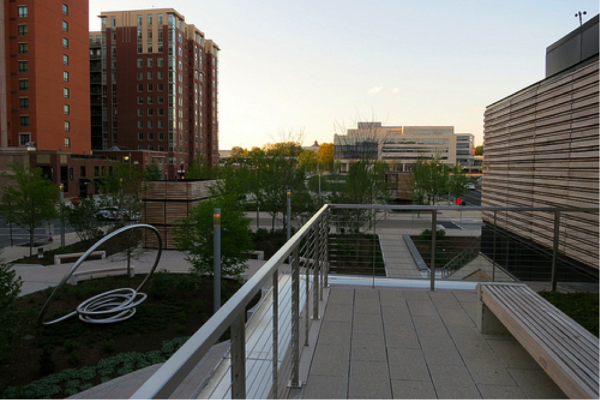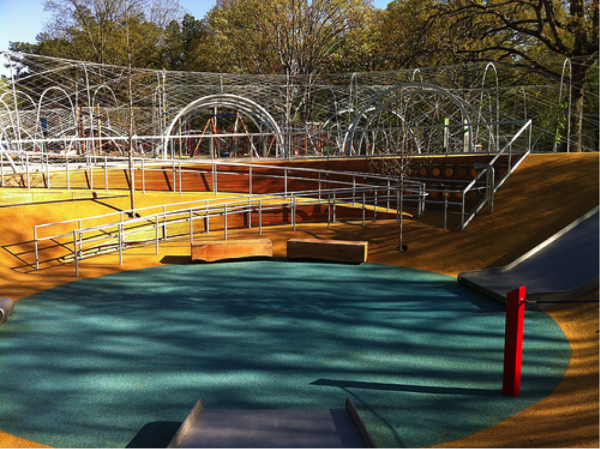Green building is an integral part of the future of architecture and engineering, whether dealing with buildings, softscape or hardscape infrastructure. We’d like to highlight current efforts that promote green building design and sustainable practices.
In a previous post on green building and certification, we explored the differences between the two major programs that rate and reward environmentally conscious building: LEED and SITES.
The key difference between these systems is this: LEED is primarily concerned with green construction and buildings themselves, while SITES puts its focus on regenerative and environmentally beneficial landscapes, which may or may not include infrastructure.
A New SITES Iteration
In June 2014, the SITES v2 Rating System was released by the Sustainable Sites Initiative for public use. Anyone working in land design and development, including architects, designers, engineers, developers and policy makers, is free to use SITES v2 Rating System and its Reference Guide.
SITES v2 is a culmination of seven years of work from thousands of professionals and the results of over 100 pilot projects that tested the first iteration of SITES released in 2009.
Danielle Pieranunzi, the SITES program direction at the Lady Bird Johnson Wildflower Center at the University of Austin, noted the importance and purpose of SITES in a statement: “When we design and manage our environment, we have the responsibility to do so in ways that conserve water, clean air and water, and reduce vulnerability to damage from flooding, storm surge and drought. The performance-based benchmarks of SITES v2 will guide and reward exemplary projects that accomplish these important goals.”
SITES looks to transform not only isolated landscaping projects, but the entire face of landscape architecture.
What is a Sustainable Landscape?
According to SITES, sustainable landscapes:
- reduce water demand
- filter and reduce stormwater runoff
- provide wildlife habitat
- reduce energy consumption
- improve air quality
- improve human health
- encourage and increase outdoor recreation
While SITES is more focused on landscapes in comparison to LEED, it’s worth noting for anyone looking into the design of greenspaces. The future is moving towards sustainable and environmentally responsible design and construction practices. Green building is the future — and it’s worth gaining more knowledge about it.
From the 100 SITES pilot projects, around 30 have received certification. Here are just a couple of the projects that have been SITES certified:
Washington Canal Park, Washington D.C.
Three-Star Certified

The Woodland Discovery Playground at Shelby Farms, Memphis, TN
One-Star Certified

PermaTrak strives to make being environmentally responsible part of the design and implementation of our products, from the materials we use to the construction methods and the overall long-term footprint of our system.
Click here for more SITES certified projects. For an overview of the SITES program and to learn more about the benefits of sustainable landscapes, you can register to attend a free SITES webinar.
Photo Credit: 1st photo by Bill Rand, 2nd photo by Memphis CVB
Click here to read more about PermaTrak’s LEED benefits for green building.
Related Article:


